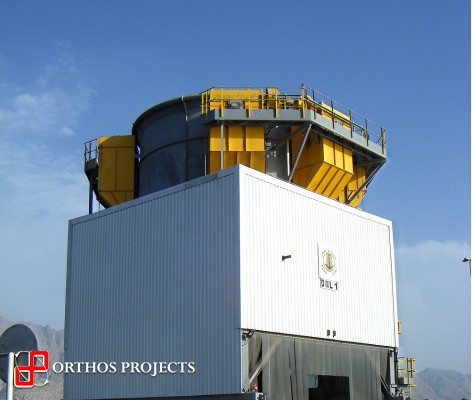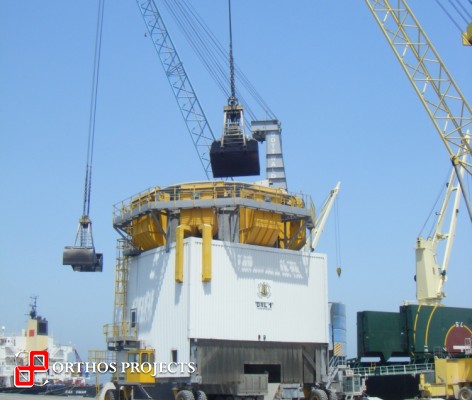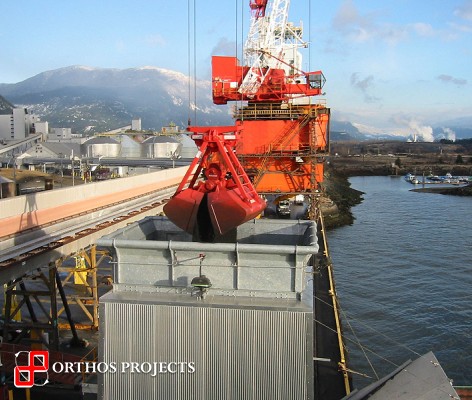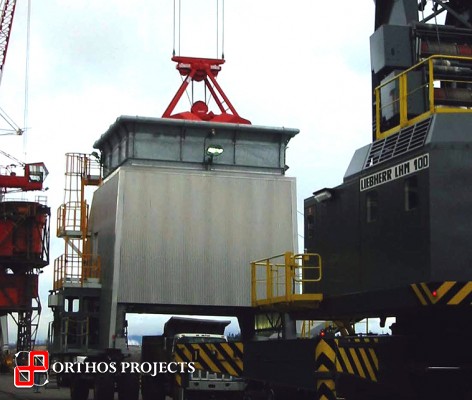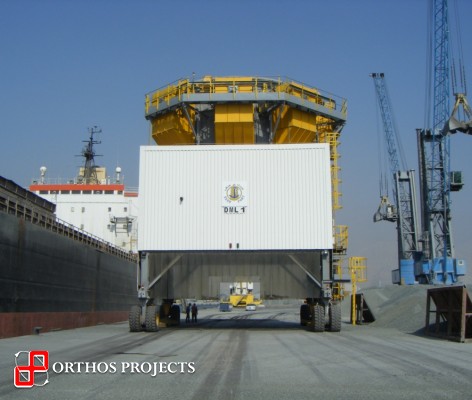Ports
Ports are increasingly concerned about environmental issues and the running costs associated with dust emissions for handling loose bulk solids, at ever-greater throughputs. Environmental Protection Act (EPA) legislation is playing an ever-increasing part in the design process for handling systems in North American and European ports. Apart from polluting the environment and contravening legislation, dust problems have adverse effects on machinery by causing friction and increased wear.
Following the acquisition of the intellectual property rights and engineering designs Orthos Projects are now offering the full range of aspirated and non-aspirated Dockside Mobile Loaders, pioneered by E&F Services. This acquisition complements our existing range of equipment within the materials handling sector.
New technology dock mobile loaders
Orthos Projects specialise in the handling and abatement of dusty cargoes from crane grabs, material reception systems and all aspects of bulk handling plant. Their dockside mobile loaders (DMLs) gained a technological lead in eliminating spillage and controlling dust.
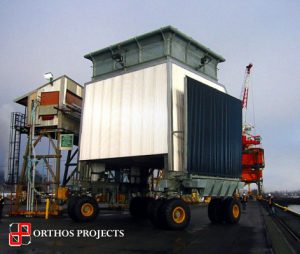
Unique Features
The DML’s feature a number of unique loading and discharge features, with the benefit of meeting strict environmental legislation on the unloading of dusty cargo.
- For the grab unloading of bulk dusty cargo.
- Throughput up to 1000tph (Subject to material bulk density)
- Proven environmental emission levels.
- Ability to handle a variety of products.
- Self contained onboard power source.
- Proven maneuverability in restricted dock space.
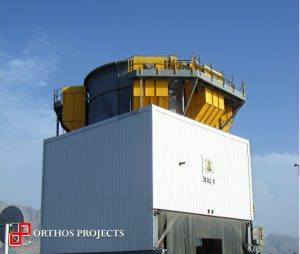
Dockside Mobile Loaders (DML’s) have gained a technological lead in eliminating spillage, controlling dust and incorporating aspects of tribology in the design of bulk solids applications. Grab unloading of dusty cargo using DML’s has been proven to be successful in satisfying increasingly stringent EPA limits, reducing double handling and improving ship turnaround times.
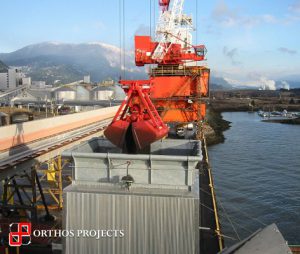
The 20 plus, DML’s worldwide comprise some of the following components to achieve the design parameters for dust control to achieve EPA limits.
The Grab Enclosure provides a containment zone around the Grab when it discharges. This reduces the effects of wind and helps contain spillage. The enclosure and Grab must have good compatibility.
The Grab Protection Structure takes any possible impact from the Grab. Grab force is potentially very destructive. The structure protects the Hopper Grids and Baffle Plates.
The Grids protect the system from any ingress of foreign objects which could possibly damage belts and machinery further down the system. They also help to break up any lumps of product.
Air Curtains use multiple ports to help contain and direct dust plumes efficiently into the capture system.
Dust Suppression Grids divert any clouds of dust into the intakes of the Filter modules. They have the effect of reducing air volumes of the system and hence running costs.
Dust Extraction Filters are extremely efficient at (99.98%). A series of Filters housed in the upper section of the Hopper encircling the capture.
Mist Suppression almost dry atomised fog is introduced into the containment zone to suppress dust utilising ultrasonic’s.
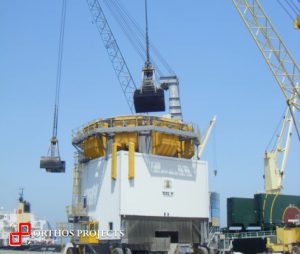
Drive systems, comprising four epicyclical hydraulic gearboxes with automatic brakes, mounted on each of the twin front wheels, controlled from the Operator’s Cab and powered by a hydraulic power pack, giving 100,000 metres of torque to each independently driven wheel.
Ackermann steering system gives the DML’s their unique manoeuvrability, the ability to negotiate 90° bends and travel up and down inclined roads in docks restricted for space.
Four 100t Jacks lift the DML off the Dock to spread the load and take the working impact loads off the wheels and gearboxes.
Air conditioned Cab with Operator seat, Joystick and touch controls with high visibility of discharge operations.
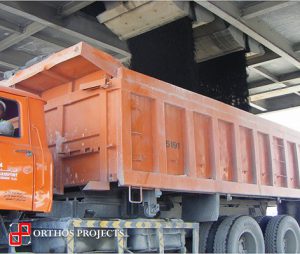
Twin Heavy Duty Clamshell Doors independently hydraulically operated to give variable throughput to open trucks without or with Aspiration and Suppression to give dust free loading.
Telescopic Loading Spout hydro-pneumatically operated with horizontal positioner for loading tankers, with Aspiration to give dust free loading.
Discharge Belt Feeder heavy duty robust variable speed or single speed discharge to dock conveyors with or without Aspiration to give dust free feeding.

New technology dock mobile loaders
The control of dust at the source – first by containment and only then by filtration – is the most cost-effective means of controlling dust. It is estimated that by correctly designing containment in the planning stages of bulk handling projects, the filtration area could be reduced by over 22 percent. This results in considerable capital savings on dust plant.
With the implementations of COSHH (Control of Substances Hazardous to Health) regulations (plus the subsequent amendments), and the advent of the EPA Regulations since the 1990s, Port management are increasingly aware of the design implications of containment on a variety of bulk and unit handling operations in ports.
There is a strong indication of a link between respiratory substances and related illnesses, especially to the substance or dust that caused it (i.e. silica – silicosis). Port managements are beginning to view containment as a necessity to contain and suppress silica dust, because silica dusts (or quartz) in a respirable form can be dangerous to health. This is in line with COSHH assessments for occupational exposure standards to quartz.

